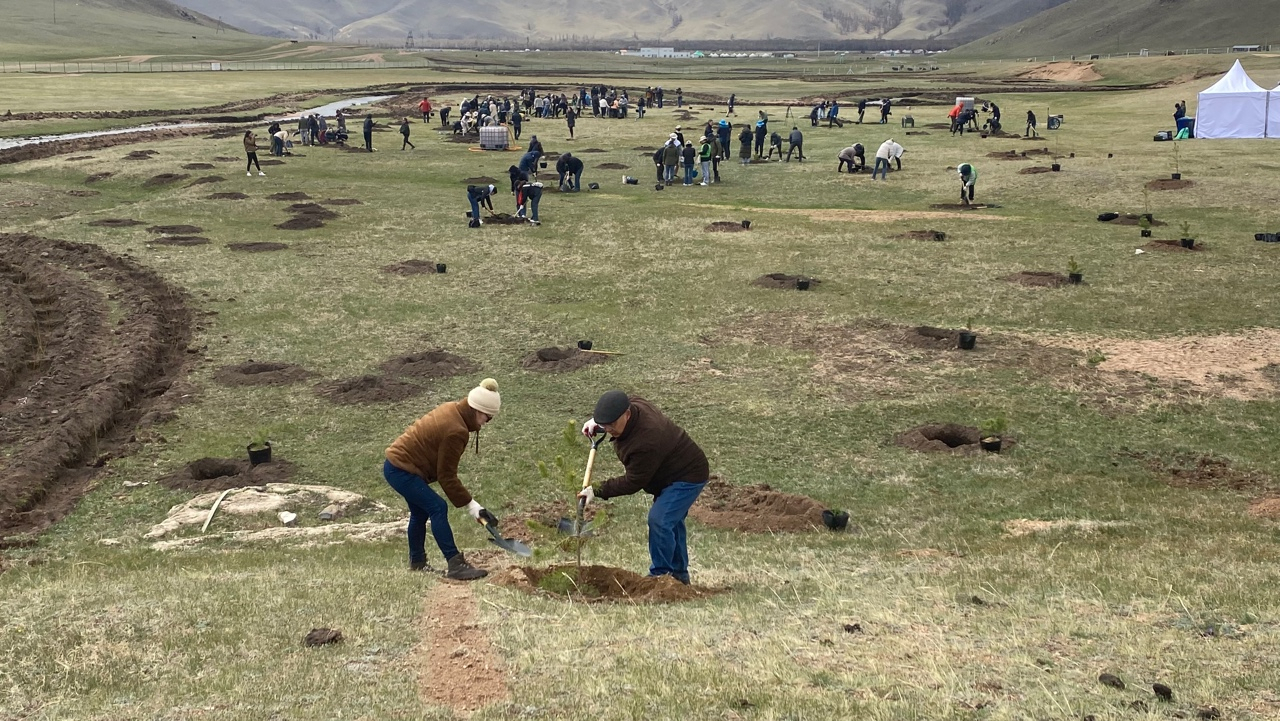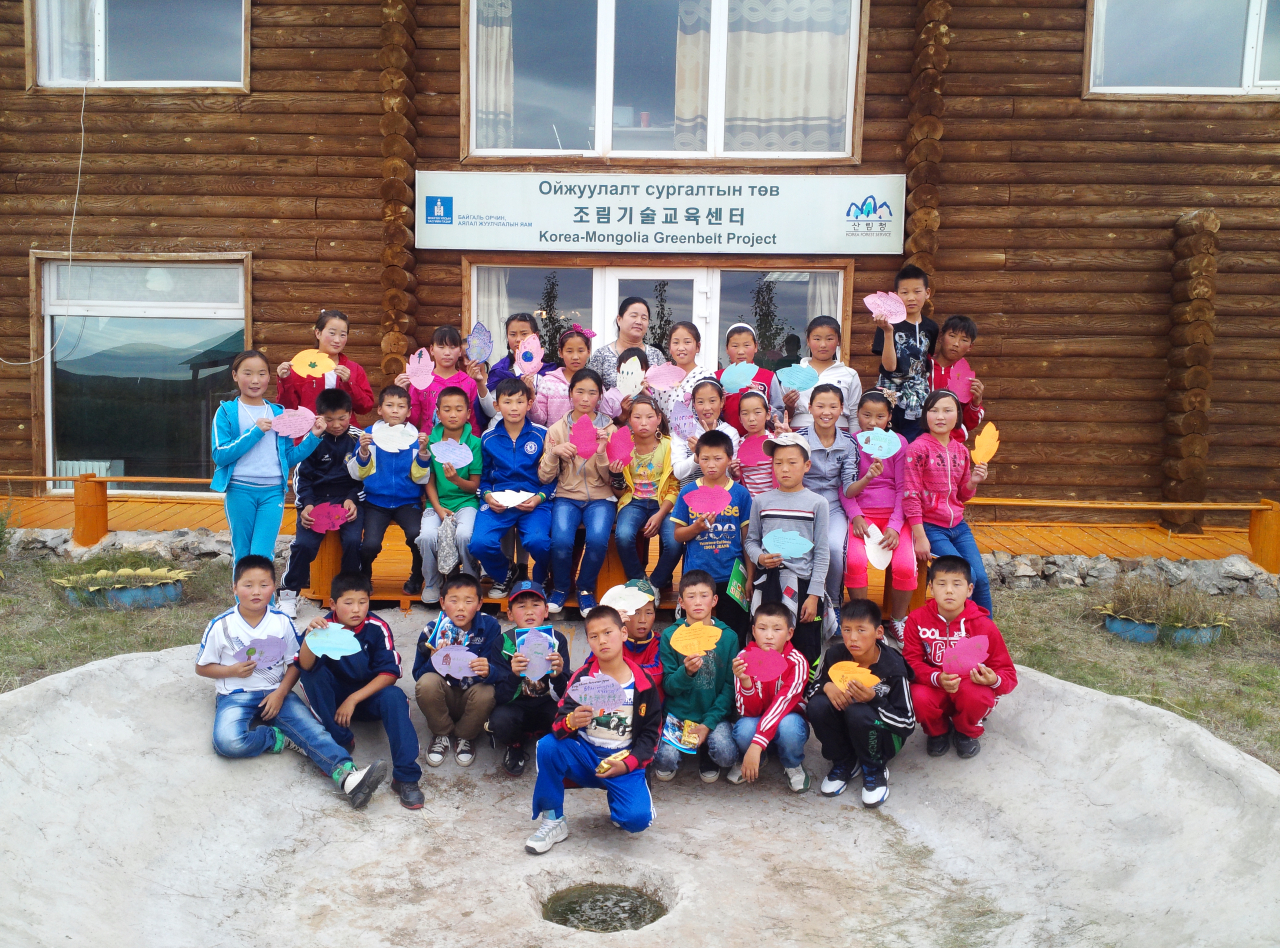Under the shared goal to tackle the climate crisis, Korea and Mongolia have been pioneering a greenbelt project, a testament to their relationship and a joint effort to rejuvenate desertifying landscapes.
The beginning of the Korea-Mongolia Greenbelt Plantation Project dates back to 2006 when the Korea Forest Service, the nation’s forest agency, and Mongolia's Ministry of Environment and Tourism formalized their forestry cooperation to combat yellow dust and desertification prevention in Mongolia with a memorandum of understanding.
Mongolia faces intensified desertification due to various human factors including overgrazing and climate change. Forest areas are dwindling, and the landscape is shifting from forest to grassland and grassland to desert. As pastures vanish, sand movement, yellow dust storms and desertification processes accelerate, demanding policy intervention.
In 2005, Mongolia launched a greenbelt program to address these challenges. Aiming to establish a vast forest to block the wind between the Gobi Desert and grassland areas, the government eyed a 1.6 percent increase of Mongolia’s forest area.
The initiative required substantial financial and technical resources. Despite efforts to leverage central and local government budgets, foreign aid and international loans, the estimated $3 billion cost made it difficult to attract willing partners.
South Korea -- which has been maintaining close relations with Mongolia since the two countries established diplomatic relations in March 1990 and signed a forestry cooperation agreement in 1998 -- decided to join the three-phase project.
 |
The reforestation site of the Korea-Mongolia Greenbelt Plantation Project located in Lun, Mongolia, begun in 2008. (Korea Forest Service) |
Cultivating reforestation techniques
Strides have been made through reforestation efforts during the first phase of the joint project that ran from 2007 to 2016, focusing on creating forests aiming to halt desertification.
Korean experts played a crucial role in the project, as Mongolia lacked large-scale reforestation technology and experience at the time.
Key sites for the initiative included: Lun Som in Tuv province, 130 kilometers west of Ulaanbaatar; Dalanzadgad in Umnugobi province, 600 kilometers south of the capital; and Bayanzag, another 100 kilometers from Dalanzagad.
These areas became the reforestation effort’s core, with nurseries established at each station. Across 3,046 hectares, or 30.46 million square meters, approximately 838,000 trees were planted, encompassing 23 species, such as saxaul and Ulmus pumila. The nurseries within the sites covered a combined area of 47 hectares.
Phase one also included an educational component. Training around 8,000 Mongolians in reforestation techniques to ensure sustainability, the decade-long training and joint research emphasized the importance of reforestation. Through demonstrating that even arid regions could support tree planting, awareness grew of the importance of preventing desertification.
In response, the Mongolian government designated the second Saturdays of May and October as Arbor Days and revised forest-related legislation accordingly.
The nurseries and reforested areas developed during phase one of the project gradually transferred responsibilities to Mongolian management, emphasizing local stewardship. The Korea-Mongolia Greenbelt Plantation Project team handed over the reforested areas in Lun, Dalanzadgad and Bayanzag to the respective regional governments.
 |
The Korea-Mongolia Greenbelt Plantation Project team participates in the reforestation of Mongolia's vast degraded steppe lands. (Korea Forest Service) |
Urban forests in Ulaanbaatar
Phase two commenced in 2017 and continued until 2021, highlighting the need for new forestry policies to address Mongolia's climate change and desertification challenges. Among the significant issues emerging from Mongolia’s environmental crisis is the population concentration in Ulaanbaatar. Rapid urbanization and population growth have led to decreased green spaces in the city, underscoring the necessity for urban forests.
The Korea-Mongolia Greenbelt Project aimed to establish Mongolia’s first urban forest in the northern part of Ulaanbaatar to alleviate severe air pollution. Sukhbaatar district was chosen for this initiative, with the Ministry of Environment and Tourism providing land owned by the Forestry Development Research Center. An advisory team was formed to prepare for the urban forest’s establishment, focusing on soil, water resources, local environment and tree species selection.
Phase two of the urban forest project emphasized expanding green spaces within the city, incorporating local residents' input. The construction of a 40-hectare urban forest began in the northern area of Ulaanbaatar, marking a significant step toward improving the city's environment and residents' quality of life.
The secondary phase culminated in September 2021, despite disruptions such as the COVID-19 pandemic. KFS notes that the urban forest, created over five years, has become a landmark symbolizing amity between Korea and Mongolia.
KFS defines an urban forest as the harmonization of the city's ecosystem and landscape, which provides green spaces for people to enjoy forest recreation. A visitor center has also been established within the forest to highlight the achievements of the Korea-Mongolia Greenbelt Plantation Project and to promote Korean forestry policies.
On May 11 of this year, Mongolia's national tree-planting day, a large-scale tree-planting event was held at the site, attended by Mongolian President Ukhnaagiin Khurelsukh and over 80 participants.
 |
Participants in the large-scale tree-planting event held on May 11, Mongolia's national tree-planting day, at the urban forest located in the northern part of Ulaanbaatar, pose for a photo. (Korea Forest Service) |
Tree-planting nationwide
The Mongolian president announced the Billion Tree Movement, a pledge to plant one billion trees in Mongolia by 2030, during the 76th United Nations General Assembly in September 2021.
The project was driven with the aim to combat climate change, prevent desertification and foster green economic development. This campaign is divided into three phases: a four-year preparation phase beginning in 2021, a three-year acceleration phase starting in 2024 and a stabilization phase from 2027 to 2030.
Various actions have been made to support the success of this tree-planting project. The Billion Tree Fund was established to provide financial backing, and the forestry policy division within Mongolia's Ministry of Environment and Tourism was elevated to the status of the National Forest Agency. Legal frameworks for tree planting were also revised and a large-scale forestry conference was held in 2022 to outline the future of Mongolia's forestry.
Continued forestry cooperation
Phase three, running from 2022 to 2026, is an extensive forestry cooperation project. This phase focuses on restoring areas of northern Mongolia damaged by wildfires, establishing an effective wildfire response system and creating infrastructure to combat desertification.
The creation of public-private partnership forests to support corporate environment, social and governance activities and support in the Billion Tree Movement will also be made in order to enhance Mongolia's forestry sector capabilities.
This year marks the 18th anniversary of the Korea-Mongolia Greenbelt Plantation Project, which began in 2007. KFS regards this project as one of the most successful cooperative ventures between Korea and Mongolia.
In May, the Korea-Mongolia Greenbelt Plantation Project team received top marks for project operation and management among 19 organizations at a performance review and presentation organized by the Mongolian Ministry of Environment and Tourism.
In response to the heightened interest triggered from the Billion Tree Movement, KFS plans to enhance forestry cooperation further between the two nations.
“Phase three will focus on strengthening capabilities in wildfire response, nursery and education programs, forest creation and agroforestry. We will continue efforts to improve sustainability and share Korea's advanced forestry technologies in diverse areas,” a KFS official said.







